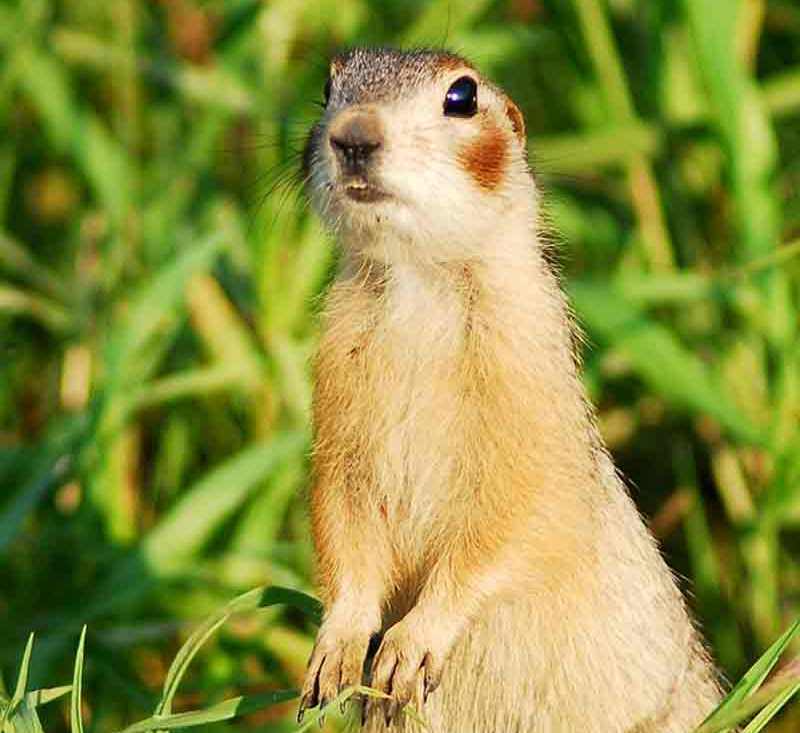
Red-cheeked ground squirrel (Citellus erythrogenys, or Spermophilus erythrogenys)
Phylum — chordata
Class — mammalia
Order — rodentia
Family — sciuridae
Genus – citellus
Appearance
The Red-cheeked ground squirrel has a stout, low-slung body supported by short legs and a well-furred tail measuring about a third the length of the body. It has internal cheek pouches for carrying food. The head, neck and body are varying shades of grayish brown and there is a reddish-ochre patch on the bridge of the nose. Body length 23.5-28 cm.
Habitat
The Red-cheeked ground squirrel is distributed across the territory of the former Soviet Union, in Kazakhstan, Altai and Western Siberia, Mongolia and China (Xinjiang province).
Behavior
Behavior and daily activity varies greatly across the distribution range. Hibernation occurs in some areas and aestivation in others. This species is diurnal. The burrows have permanent vertical entrances and temporary slanting ones.
Diet
Its feeds are the green parts of plants, seeds and roots.
Reproduction
Reproduction rates vary depending on the weather conditions and are reduced during a prolonged cold spring. There are 2 to 12 young in a litter, typically 7 to 9.
In captivity
Life expectancy in captivity is up to 4 years.
Red-cheeked ground squirrels can be kept at home. A medium-sized cage is suitable for keeping one animal. For a couple – a male and a female, an aviary of at least 1x1 m is being built on a high concrete foundation. Inside the aviaries, shelters are placed (houses, boxes, pieces of pipes, etc.), blocks for sharpening incisors, drinking bowls with fresh water. The bedding is changed regularly. By September, animals are given a lot of material for bedding-straw, leaves. After falling into hibernation, the cells are covered with a thick layer of the same materials. During hibernation, animals are kept one at a time.
Food at home does not have any difficulties: a mixture of grains of cultivated and wild cereals, rhizomes of field plants, vegetables and fruits, green branches of soft trees. They willingly eat oats, sunflowers, grains of cultivated cereals mature and in the stage of milky-waxy ripeness, granulated feed, bread, beets, carrots, mealworms, herbs.
 Russian
Russian
 English
English


















